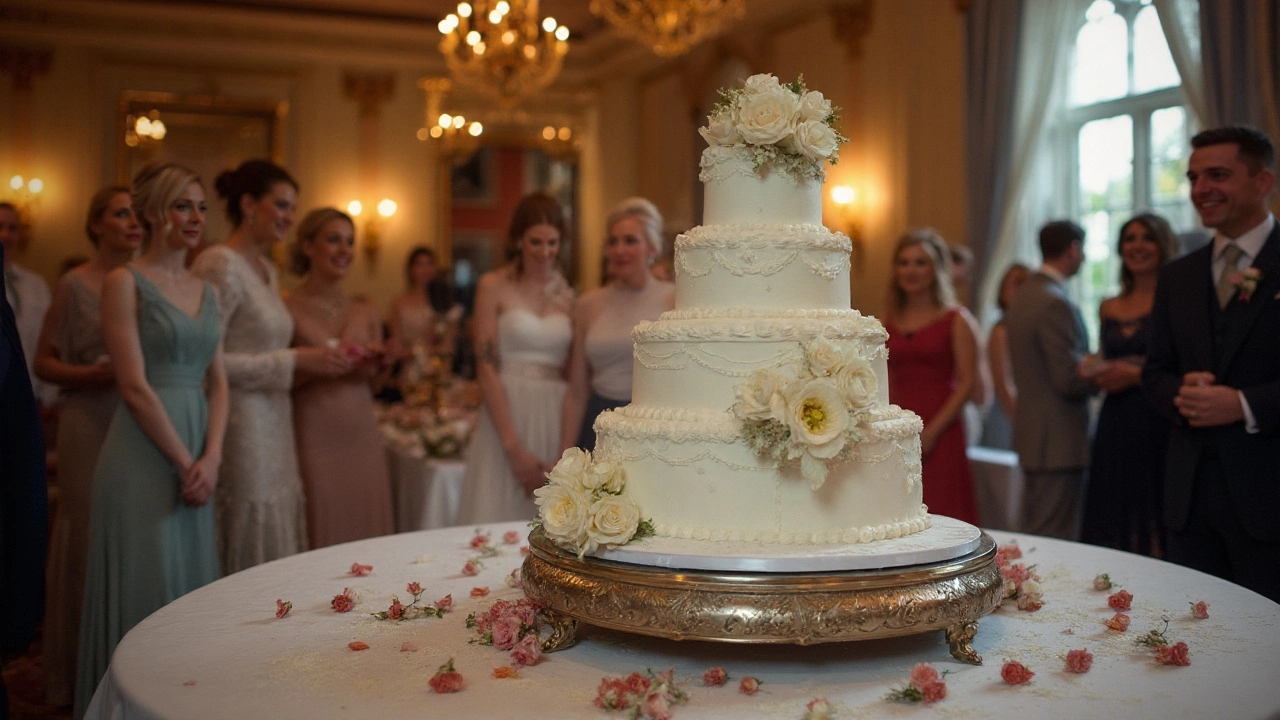Traditional Wedding Cake: History, Tips & Modern Ideas
Ever wonder why the cake‑cutting moment feels like the climax of every wedding? It’s not just for Instagram – there’s real meaning behind that first slice. In this guide we’ll unpack the tradition, share practical tricks for keeping your cake tasty, and give you fresh ideas that fit a Bristol wedding budget.
Why the Cake Cutting Became a Must
The first bite together started as a symbol of unity. Back in medieval Europe, couples shared a piece of a small, sweet loaf to show they’d face life’s ups and downs as one. Over time that loaf grew into the multi‑tiered confection we know today. Cutting the cake together also signals the start of the reception – it tells guests it’s time to celebrate.
Modern couples use this moment to showcase personality. Some pick a dramatic buttercream flip, others go for a simple knife‑and‑fork reveal. No matter the style, sticking to the tradition adds a familiar, comforting touch that many guests expect.
Keeping Your Cake Fresh – Even After the Big Day
Saving the cake for an anniversary isn’t just sentimental; it can be delicious if you store it right. First, wrap each tier tightly in plastic wrap, then add a foil layer to keep out freezer burn. Store the cake in a flat freezer for up to a year. When you’re ready to eat, let it thaw in the fridge for 24 hours, then bring it to room temperature before serving.
If you plan to eat the cake within a few weeks, a cool, dry pantry works. Just keep it covered with a cake dome or airtight container. Remember, frosting can dry out fast, so a fresh topping of fruit or a dusting of powdered sugar can revive the look.
Many Bristol bakers now offer “cake‑preserve” services – they’ll freeze the cake for you and deliver it on your anniversary. It’s a handy option if you’re short on freezer space.
Choosing Flavors and Designs That Fit Bristol Venues
Bristol weddings often feature coastal vibes or historic venues. Match your cake to the setting: think lemon‑blueberry for a seaside ceremony, or a rich chocolate ganache for a manor house. If you want a pop of colour without overwhelming the décor, add fresh local flowers like roses or lavender between the tiers.
Budget‑wise, a simple two‑tier cake with an elegant buttercream finish can look just as stunning as a five‑tier masterpiece. Ask your baker for a “naked” style – minimal frosting on the outside but a burst of colour inside. It reduces labour costs while still delivering visual wow.
Don’t forget dietary needs. Gluten‑free almond flour or dairy‑free coconut cream options are widely available in Bristol. A small tasting session can confirm the taste and texture before you lock in the final design.
Practical Tips for the Big Day
1. **Plan the timing** – Schedule the cake cut about 20‑30 minutes into the reception. This gives guests a chance to settle and ensures the cake is still fresh.
2. **Assign a cake cutter** – Usually the bride or groom, but you can also make it a fun role for a bridesmaid or best man.
3. **Have a backup** – Keep a small “emergency” cake slice hidden in the kitchen in case the main cake gets damaged during transport.
4. **Coordinate with the photographer** – Tell them when the cake cutting will happen so they can capture the perfect shot.
By understanding the history, mastering storage, and picking flavors that echo your venue, you’ll turn the traditional wedding cake into a personal highlight that guests will remember – and maybe even eat years later.
Traditional Wedding Cakes: History, Flavors, and Modern Twists
Discover what truly makes a wedding cake 'traditional,' from centuries-old fruitcakes to elegant white tiers, plus practical tips and fascinating facts.
View More